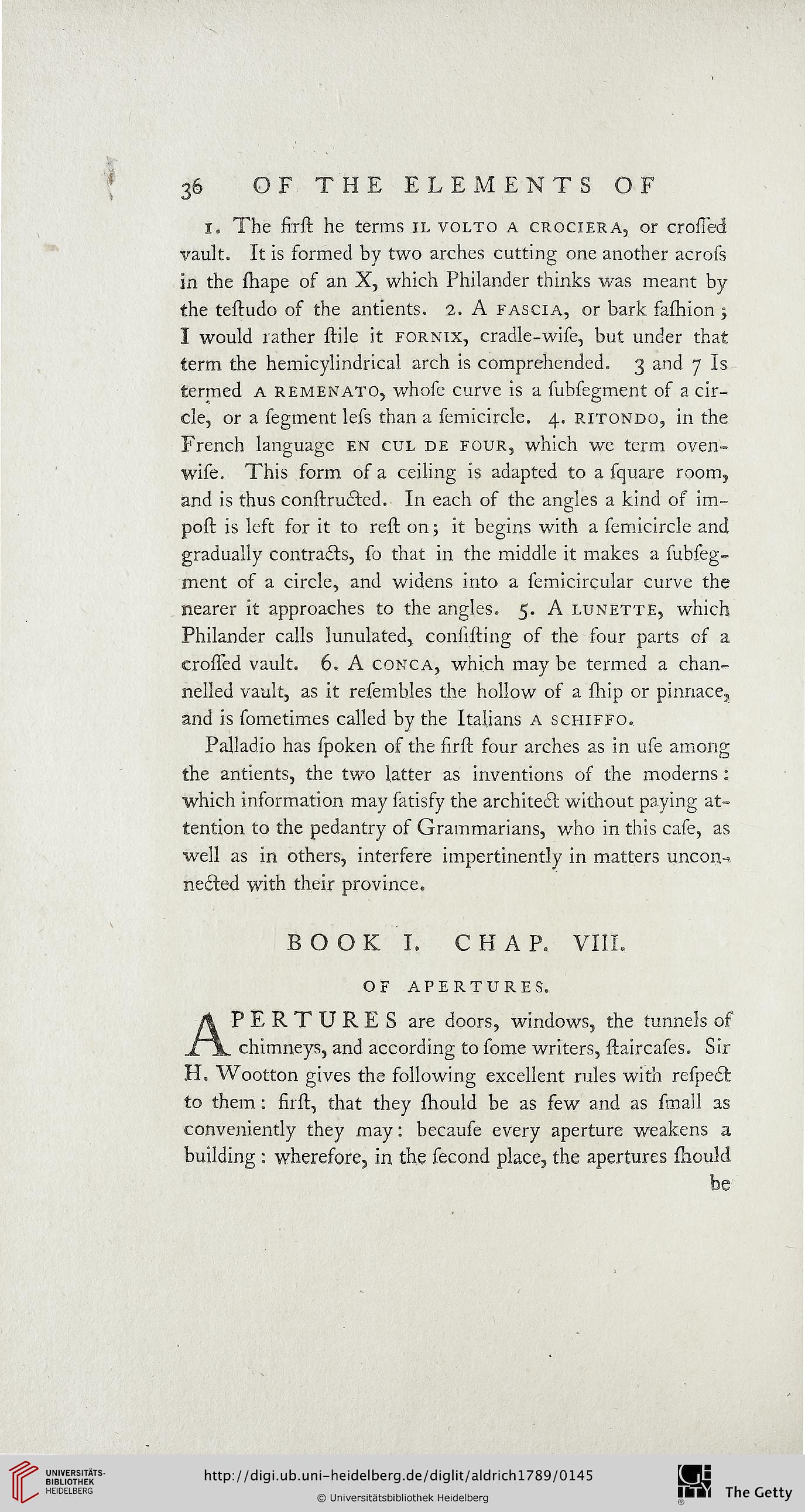36 OF THE ELEMENTS OF
i. The first he terms il volto a crociera, or crosted
vault. It is formed by two arches cutting one another across
in the shape of an X, which Philander thinks was meant by
the testudo of the antients. 2. A fascia, or bark falhion ;
I would rather stile it fornix, cradle-wise, but under that
term the hemicylindrical arch is comprehended. 3 and 7 Is
termed a remenato, whose curve is a subsegment of a cir-
cle, or a segment less than a semicircle. 4. ritondo, in the
French language en cul de four, which we term oven-
wise. This form of a ceiling is adapted to a square room,
and is thus construdted. In each of the angles a kind os im-
post is left for it to rest on; it begins with a semicircle and
gradually contrails, so that in the middle it makes a subseg-
ment of a circle, and widens into a semicircular curve the
nearer it approaches to the angles. 5. A lunette, which
Philander calls lunulated, consisting of the four parts of a
crosted vault. 6. A conca, which may be termed a chan-
nelled vault, as it resembles the hollow of a ship or pinnace,
and is sometimes called by the Italians A schiffo.
Palladio has spoken os the first four arches as in use among
the antients, the two latter as inventions of the moderns :
which information may satissy the architect without paying at-
tention to the pedantry of Grammarians, who in this case, as
well as in others, interfere impertinently in matters uncon-
nected with their province.
PERTURES are doors, windows, the tunnels of
chimneys, and according to some writers, staircases. Sir
H» Wootton gives the following excellent rules with respect
to them: first, that they should be as few and as small as
conveniently they may: because every aperture weakens a
building : wherefore, in the second place, the apertures ssiould
BOOK I. CHAP. VIII.
OF APERTURES.
be
i. The first he terms il volto a crociera, or crosted
vault. It is formed by two arches cutting one another across
in the shape of an X, which Philander thinks was meant by
the testudo of the antients. 2. A fascia, or bark falhion ;
I would rather stile it fornix, cradle-wise, but under that
term the hemicylindrical arch is comprehended. 3 and 7 Is
termed a remenato, whose curve is a subsegment of a cir-
cle, or a segment less than a semicircle. 4. ritondo, in the
French language en cul de four, which we term oven-
wise. This form of a ceiling is adapted to a square room,
and is thus construdted. In each of the angles a kind os im-
post is left for it to rest on; it begins with a semicircle and
gradually contrails, so that in the middle it makes a subseg-
ment of a circle, and widens into a semicircular curve the
nearer it approaches to the angles. 5. A lunette, which
Philander calls lunulated, consisting of the four parts of a
crosted vault. 6. A conca, which may be termed a chan-
nelled vault, as it resembles the hollow of a ship or pinnace,
and is sometimes called by the Italians A schiffo.
Palladio has spoken os the first four arches as in use among
the antients, the two latter as inventions of the moderns :
which information may satissy the architect without paying at-
tention to the pedantry of Grammarians, who in this case, as
well as in others, interfere impertinently in matters uncon-
nected with their province.
PERTURES are doors, windows, the tunnels of
chimneys, and according to some writers, staircases. Sir
H» Wootton gives the following excellent rules with respect
to them: first, that they should be as few and as small as
conveniently they may: because every aperture weakens a
building : wherefore, in the second place, the apertures ssiould
BOOK I. CHAP. VIII.
OF APERTURES.
be





